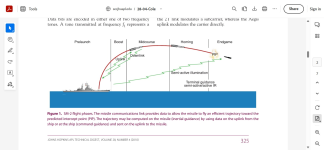Well, I proved that Jilin 1 can track and take a video of a plane in flight . What prevents radar satellites from doing the same thing providing you have enough satellites? This article explains how Jilin is doing the trick Now Jillin's constellation is close to 230 maybe
<p>Jilin-1 is China's first self-developed commercial remote sensing satellite system. The satellites are operated by Chang Guang Satellite Technology Corporation and named after Jilin Province where the company is headquartered. The first set of satellites were launched by Long March 2D in...

www.eoportal.org
Jilin Constellation
Spacecraft Results Launches Mission Status References
Jilin-1 GXA (Guangxe-A — Optical-A) is a Chinese commercial remote sensing satellite mission, also referred to as JL-1, designed and owned by the Chang Guang Satellite Technology Co. Ltd (CGSTL) of Bejing. The development of the JL-1 constellitation began in 2015, and the first 4 satellites were launched on 7 October 2015. In 2021, there are 30 satellites in the constellation and the constellation will be expanded to 138 satellites to offer high resolution imagery and a high revisit commercial service.
1)
While the new generation of a VHR (very high resolution) microsatellite constellation is being developed by CGSTL (Chang Guang Satellite Technology Ltd.) of China, the data products are being commercialized by the HEAD Aerospace Group, a privately-owned space company with its headquarter in Beijing. Founded in 2007, HEAD has an extended presence globally including subsidiaries in Hong Kong, France, and the Netherlands.
On 15 September 2020, China successfully launched nine Jilin-1 GF-03 satellites on a Long March 11 vehicle from the China Sea, which will further increase the Earth Observation satellite portfolio commercialized by HEAD Aerospace. Jilin-1 GF-03 is part of the Jilin-1 constellation operated and developed by Chang Guang Satellite Technology Co., who is the strategic partner of HEAD Aerospace.
2)
The successful launch of the nine satellites of Jilin-1-GF-03 is part of the constellation of 54 sub-meter satellites enabling imaging anywhere on Earth every 10 minutes with observations from 10 to 16 hours. By the end of 2021, the Jilin-1 constellation expects to be composed of 60 satellites in orbit. By the end of 2025, the full constellation of 138 satellites will be in orbit, resulting in round-the-clock, all-weather, full-spectrum data acquisition, capable of providing geospatial information products and services of the highest temporal and spatial resolution globally.




